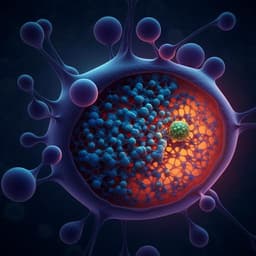
Earth Sciences
Regional sensitivity patterns of Arctic Ocean acidification revealed with machine learning
J. P. Krasting, M. D. Palma, et al.
Dive into the effects of ocean acidification on Arctic marine life as researchers John P. Krasting, Maurizia De Palma, Maike Sonnewald, John P. Dunne, and Jasmin G. John use cutting-edge machine learning to uncover critical patterns in acidification simulations across sub-regions. Their findings reveal alarming trends in the central Arctic that highlight the urgency of understanding these changes.
Playback language: English
Related Publications
Explore these studies to deepen your understanding of the subject.







